 1981 BMW 5 Series (E28) Dimensions, Size & Specs
1981 BMW 5 Series (E28) Dimensions, Size & SpecsMeasurements of the 1981 BMW 5 Series, engineered for optimal performance and comfort
| Dimensions | |
|---|---|
| Length: | 4604-4620 mm181.3-181.9 in15.1-15.2 ft |
| Width: | 1700-1710 mm66.9-67.3 in5.6-5.6 ft |
| Height: | 1397-1415 mm55.0-55.7 in4.6-4.6 ft |
| Ground Clearance: | 140-152 mm5.5-6.0 in0.5-0.5 ft |
| Trunk Capacity: | 460 liter16.2 cu ft |
| Weight Specifications | |
| Curb Weight: | 1140-1370 kg2513-3020 lbs |
| Maximal permitted Weight: | 1730-1900 kg3814-4189 lbs |
| Roof Load: | 75 kg165 lbs |
| Tire Specifications | |
| Rims Sizes: |
|
| Tire Sizes: |
|
The BMW 5 Series (E28) represents the second generation of BMW's iconic mid-size luxury sedan, produced from 1981 to 1987. As a successor to the E12, this generation brought improvements in both design and engineering while maintaining the classic BMW driving experience. The E28 sedan features a length ranging between 4604 mm and 4620 mm (181.3 to 181.9 inches), making it comfortably spacious for its time. Its width varies between 1700 mm and 1710 mm (66.9 to 67.3 inches), offering a balanced stance suitable for both urban and highway driving. The height spans from 1397 mm up to 1415 mm (55.0 to 55.7 inches), contributing to the vehicle's aerodynamic profile and elegant silhouette.
In terms of weight, the curb weight for the BMW E28 varies between 1140 kg and 1370 kg (2513 to 3020 lbs), depending on the model and equipment, with a maximum permissible total weight between 1730 kg and 1900 kg (3814 to 4189 lbs). This weight distribution supports agile handling and responsive dynamics characteristic of BMW sedans.
The E28 is equipped with a generous luggage capacity of 460 liters (16.2 cubic feet), offering practical storage space for daily use or longer trips. Roof load capacity is rated at 75 kg (165 lbs), allowing for additional cargo options such as roof racks or boxes.
Ride height or ground clearance is between 140 mm and 152 mm (5.5 to 6.0 inches), enabling a good balance between sporty handling and practicality over various road conditions. The vehicle comes with rim sizes of 14 and 16 inches, fitted with tires sized 175/80 R14 or 220/55 R16, catering to different driving preferences and conditions.
Overall, the BMW 5 Series E28 combines classic 1980s styling with solid performance and practicality, making it a respected model in the evolution of BMW's mid-size luxury sedans. Whether viewed for its timeless design or its engineering, the E28 remains a significant chapter in BMW's automotive legacy.
Discover the standout features that make the 1981 BMW 5 Series a leader in its class
Have a question? Please check our knowledgebase first.
The BMW 5 Series (E28), produced from 1981 to 1987, has a length ranging from 4604 mm to 4620 mm (approximately 181.3 to 181.9 inches). Its width spans between 1700 mm and 1710 mm (66.9 to 67.3 inches), and the height varies from 1397 mm to 1415 mm (55.0 to 55.7 inches). These dimensions give the E28 a classic mid-size sedan profile, offering a good balance between cabin space and manageable exterior size for driving and parking.
The curb weight of the BMW 5 Series (E28) ranges between 1140 kg and 1370 kg (around 2513 to 3020 lbs), depending on the specific model and equipment. The maximum allowed weight (gross vehicle weight) varies from 1730 kg to 1900 kg (3814 to 4189 lbs). This weight range reflects the addition of passengers, cargo, and optional equipment. Lighter curb weights generally contribute to better handling and acceleration, while the maximum weight ensures safe operation under full load, affecting braking and fuel consumption. Balancing these weights was crucial to maintaining the sporty yet comfortable driving character typical of the E28.
A standard residential garage typically measures about 2400 mm to 3000 mm (7.9 to 9.8 feet) in width and around 4800 mm (15.7 feet) in length. With the E28's length between 4604 mm and 4620 mm (181.3 to 181.9 inches) and a width of roughly 1700 mm to 1710 mm (66.9 to 67.3 inches), it comfortably fits into most standard garages with some space to spare for entry and exit. The vehicle’s moderate height, around 1397 mm to 1415 mm (55.0 to 55.7 inches), also ensures compatibility with typical garage door heights. However, care should be taken to ensure sufficient space for opening the doors and maneuvering, especially in narrower or tightly packed garages.
The BMW 5 Series (E28) offers a trunk volume of 460 liters (approximately 16.2 cubic feet), which was quite generous for mid-size sedans in the early 1980s. This capacity allowed it to comfortably accommodate luggage for family trips and daily shopping, making it practical for both city and highway use. Compared to competitors such as the Mercedes-Benz W123 series or Audi 100 of the same era, the E28's luggage space is competitive, usually on par or slightly larger. The well-shaped trunk opening and flat loading floor further enhanced usability, making it an appealing option for buyers needing both luxury and practicality.
The ride height or ground clearance of the BMW 5 Series (E28) ranges from 140 mm to 152 mm (about 5.5 to 6.0 inches). This moderate ground clearance strikes a balance between sporty handling and everyday usability, allowing the car to effectively handle typical road conditions without risking undercarriage damage. Lower ground clearance supports better aerodynamics and cornering stability, key characteristics for BMW’s driving experience ethos. However, it may be less suited for rough terrains or steep speed bumps compared to vehicles with higher clearance. This specification was typical for performance-oriented sedans during the 1980s.
The BMW 5 Series (E28) came equipped with rims sized either 14 inches or 16 inches in diameter. Correspondingly, tire size options included 175/80 R14 and 220/55 R16. The smaller 14-inch wheels paired with taller sidewall tires provided a softer ride and better absorption of road irregularities, which was ideal for comfort-oriented models. The larger 16-inch wheels with lower profile tires offered enhanced handling and sharper steering response, typical for sportier trims or performance-focused versions. This range allowed buyers to prioritize either ride comfort or dynamic driving characteristics according to their preference.
The BMW 5 Series E28, which succeeded the E12 (produced from 1972 to 1981), featured modest growth in dimensions and weight. The E28’s length varies between 4604 mm and 4620 mm (181.3 to 181.9 inches), slightly longer than the E12’s approximate length of 4585 mm (180.5 inches). Width also increased marginally from around 1690 mm (66.5 inches) in the E12 to about 1700-1710 mm (66.9-67.3 inches) in the E28, providing improved cabin space. Height stayed comparable or slightly reduced, contributing to a more aerodynamic shape. The curb weight of the E28 was generally higher, ranging from 1140 to 1370 kg (2513 to 3020 lbs), reflecting added comfort and safety features relative to the E12, enhancing overall driving dynamics and refinement.
During its production years (1981-1987), the BMW 5 Series (E28) competed with mid-size sedans like the Mercedes-Benz W123, Audi 100, and Cadillac Seville. Dimensionally, the E28’s length (4604-4620 mm / 181.3-181.9 in) and width (1700-1710 mm / 66.9-67.3 in) placed it comfortably in the mid-size category, with a trunk space of 460 liters (16.2 cubic feet) competitive for its class. Compared to the Mercedes-Benz W123, which was slightly longer but narrower, the E28 offered a sportier and more driver-focused experience with slightly lower height enhancing aerodynamics. Audi 100 was similar in size but emphasized aerodynamic styling and fuel economy. Overall, the E28 balanced practicality with sportiness, making it a desirable luxury sedan of its era.
The BMW 5 Series (E28) has a roof load capacity of 75 kilograms (approximately 165 pounds). This means it can safely support roof-mounted cargo such as luggage boxes, roof racks for bikes, or other equipment within this limit without compromising the structural integrity or safety of the roof. It is essential to stay within this specified weight to avoid adverse effects on vehicle handling, roof stability, and potential damage. For those intending to carry additional cargo, installing a compatible roof rack system that distributes weight evenly is recommended, respecting the 75 kg limit for optimal safety and performance.
The BMW 5 Series (E28) introduced a significantly more aerodynamic and modern design compared to its predecessor, the E12. Although the body dimensions saw only minor increases — a slightly longer length between 4604 and 4620 mm (181.3 to 181.9 inches) and a marginally wider stance of 1700 to 1710 mm (66.9 to 67.3 inches) — the design emphasis improved airflow and reduced drag. The E28 sported cleaner, sharper lines, a more raked windshield, and a lower hood profile, which not only enhanced aesthetic appeal but also contributed to better fuel efficiency and higher top speeds. This evolution in styling represented BMW's efforts to combine sportiness with executive sedan sophistication.
Discover similar sized cars.
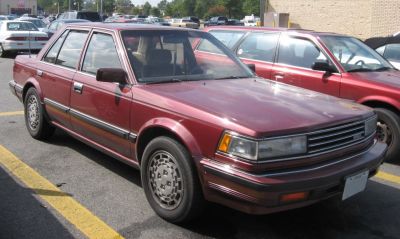
| Production: | 1984-1988 |
|---|---|
| Model Year: | 1985 |
| Length: | 4610 mm181.5 in |
| Width: | 1689 mm66.5 in |
| Height: | 1389 mm54.7 in |
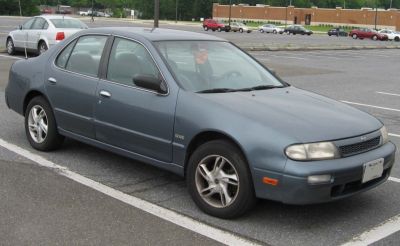
| Production: | 1993-1997 |
|---|---|
| Model Year: | 1993 |
| Length: | 4585 mm180.5 in |
| Width: | 1704 mm67.1 in |
| Height: | 1420 mm55.9 in |
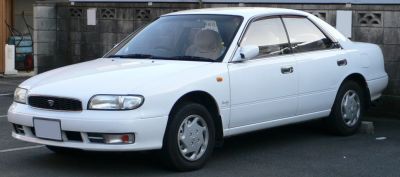
| Production: | 1991-1997 |
|---|---|
| Model Year: | 1991 |
| Length: | 4585 mm180.5 in |
| Width: | 1695 mm66.7 in |
| Height: | 1405 mm55.3 in |
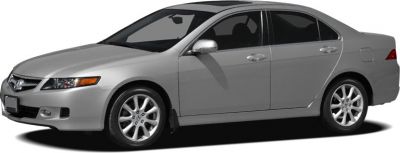
| Production: | 2003-2008 |
|---|---|
| Model Year: | 2004 |
| Length: | 4657 mm183.3 in |
| Width: | 1762 mm69.4 in |
| Height: | 1456 mm57.3 in |
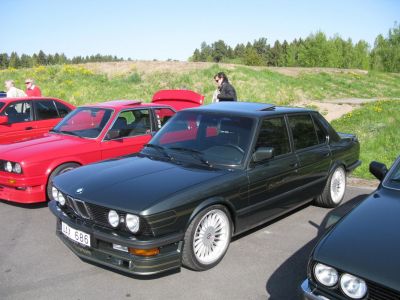
| Production: | 1984-1987 |
|---|---|
| Model Year: | 1984 |
| Length: | 4620 mm181.9 in |
| Width: | 1700 mm66.9 in |
| Height: | 1395 mm54.9 in |

| Production: | 1996-2001 |
|---|---|
| Model Year: | 1996 |
| Length: | 4600 mm181.1 in |
| Width: | 1695 mm66.7 in |
| Height: | 1410 mm55.5 in |
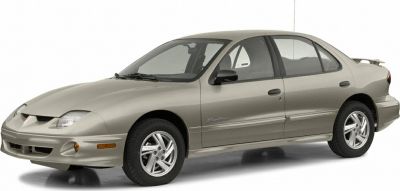
| Production: | 1994-2005 |
|---|---|
| Model Year: | 1995 |
| Length: | 4620 mm181.9 in |
| Width: | 1710-1730 mm67.3-68.1 in |
| Height: | 1393 mm54.8 in |
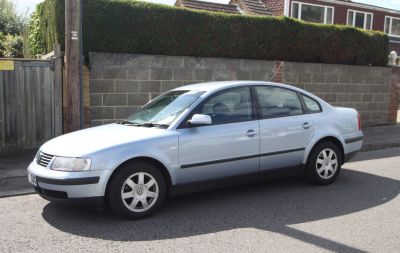
| Production: | 1996-2000 |
|---|---|
| Model Year: | 1996 |
| Length: | 4670-4703 mm183.9-185.2 in |
| Width: | 1740-1746 mm68.5-68.7 in |
| Height: | 1462 mm57.6 in |
